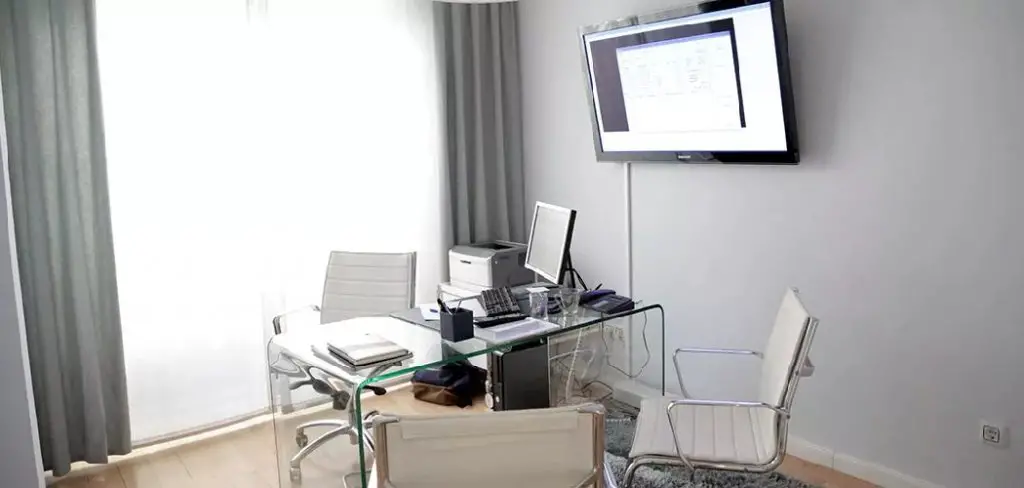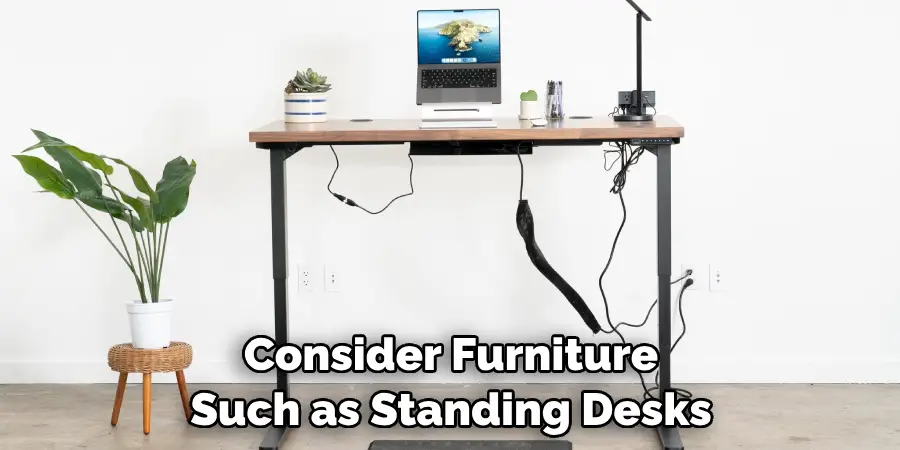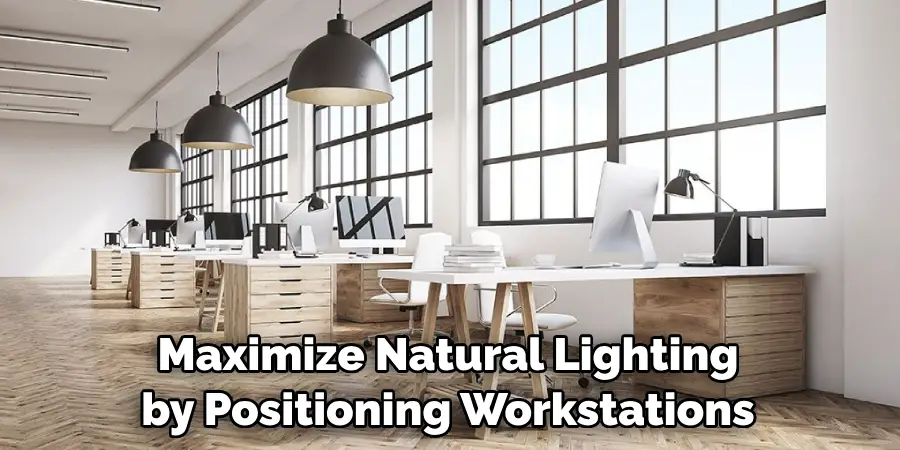Are you looking to maximize the functionality and efficiency of your office space? Optimizing office space is essential for creating a productive and organized work environment.

Whether you have a small home office or a large corporate workspace, making the most of the available space can have a significant impact on productivity and employee satisfaction. In this comprehensive guide, we will explore various strategies and tips on how to optimize office space effectively.
From smart storage solutions to ergonomic furniture choices and strategic layout planning, we will cover a range of techniques that can help you create an efficient and functional office space. By implementing these strategies, you can enhance productivity, improve workflow, and create a comfortable and inspiring workspace for yourself or your team.
Importance of Optimizing Office Space
Optimizing office space is essential for ensuring that your business runs as smoothly and efficiently as possible. By optimizing the workspace, you can create an environment that promotes productivity and collaboration while also reducing costs associated with running a traditional office.
Additionally, by optimizing your office space, you are creating a comfortable and inviting atmosphere for employees to work in, which can lead to increased motivation and higher job satisfaction. Ultimately, optimizing office space is an important step towards creating a successful business.

Optimizing office space can take many forms, from rearranging furniture and purchasing new equipment to redesigning walls and adding additional storage. Regardless of the type of changes you make, it’s important to consider how they will benefit your employees and improve their work experience.
For example, replacing outdated or uncomfortable desks with ergonomic models can help reduce strain on workers’ bodies over time, leading to better productivity and fewer sick days. Additionally, brightening up the workspace by opening windows for natural light or improving existing lighting fixtures can create a more inviting atmosphere that encourages collaboration between coworkers.
Benefits of a Well-Designed and Organized Workspace
Having a well-designed and organized workspace can have many benefits, both for employers and employees. Not only will it help to create a more efficient work environment, but it can also help improve morale and productivity.
For employers, having an optimized office space means less time spent looking for essential items like files, documents, or equipment. It also eliminates wasted energy trying to find the right person to speak with regarding specific topics.
Furthermore, by creating designated areas for tasks such as brainstorming or group meetings, employers can ensure that team members are able to collaborate in a productive manner.
Employees themselves will benefit from an optimized office space as well. By organizing the area based on individual preferences (such as separate desk spaces or a dedicated area for creative tasks), employees can maximize their efficiency and productivity. In addition, having an organized workspace will help to keep distractions at bay so that team members are able to remain focused on the task at hand.

10 Methods How to Optimize Office Space
1. Declutter and Organize:
Start by decluttering your office space and getting rid of unnecessary items. Adopt an organized approach to ensure everything has a designated place. Utilize storage solutions such as shelves, cabinets, and file organizers to keep documents and supplies neatly arranged.
Although it can be difficult to part with certain items, getting rid of what you don’t need will free up space in your office and make it easier to keep it neat. Although it can be difficult to part with certain items, getting rid of what you don’t need will free up space in your office and make it easier to keep it neat.
2. Utilize Vertical Space:
Make the most of vertical space by installing tall shelves or utilizing wall-mounted storage units. This frees up valuable floor space and provides additional storage for books, files, and equipment. Also, consider adding custom dividers or sliding wall panels to separate spaces and provide for more efficient use of office space.
However, be mindful of creating an environment that doesn’t feel too cluttered and overcrowded. Make sure to evaluate the space and plan accordingly before committing to a design.
3. Opt for Multi-Functional Furniture:
Choose furniture pieces that serve multiple purposes. For example, invest in desks with built-in storage compartments or opt for modular furniture that can be easily reconfigured to accommodate different needs.
Additionally, consider furniture such as standing desks to create more space and facilitate movement in the office. Standing desks also help reduce fatigue and muscle tension caused by sitting for long periods. Ultimately, multi-functional furniture helps maximize office space and provide workers with a comfortable and efficient work environment.

4. Create Flexible Workstations:
Implement flexible workstations that can be adjusted to accommodate different tasks and preferences. Use height-adjustable desks or provide alternative seating options like standing desks or exercise ball chairs to promote movement and ergonomics. Introduce products like privacy panels or acoustic dividers to personalize workspaces and provide a sense of separation even when working in an open office.
This will create an atmosphere of collaboration and productivity while giving employees full control over their workspace. Furthermore, having a variety of workstations allows for quick reconfiguration and easy adaptation as needed.
5. Embrace Open and Collaborative Spaces:
Designate areas for collaboration and teamwork. Create open spaces with comfortable seating, whiteboards, or brainstorming walls to encourage communication and idea-sharing among employees.
Be sure to include a variety of seating and furniture options, such as standing desks or adjustable-height desks. Make sure your office has plenty of natural light, including adjustable blinds to reduce glare when necessary. Invest in high-quality audio equipment so that remote team members can participate in meetings and conferences.
6. Optimize Natural Lighting:
Maximize natural lighting by positioning workstations near windows. Natural light not only improves productivity but also creates a more pleasant and energizing atmosphere. Use sheer curtains or blinds to control glare and maintain privacy. Additionally, consider adding task lighting to supplement natural light for individual workspaces and desks.

This will ensure that the workspace is well-lit and comfortable for each employee. However, ensure that lights are positioned appropriately to reduce glare and shadows. This will prevent eye fatigue or headaches caused by prolonged exposure to bright light.
7. Invest in Technology Integration:
Streamline office operations by integrating technology solutions. Use cloud-based storage systems, digital document management, and collaborative software to reduce the need for physical storage and improve communication. Additionally, having a unified office communication system makes it easier for employees to stay in touch and collaborate, no matter where they are.
Additionally, automated systems can reduce the need to have dedicated staff on-site for simple tasks such as copying and filing. Automation makes it easier to manage physical space while still getting work done. Technology integration also reduces the need to print and store paper documents, freeing up storage space for more important items. Investing in
8. Consider Mobile and Modular Furniture:
Incorporate mobile and modular furniture that can be easily moved and rearranged. This provides flexibility in creating temporary workspaces or accommodating changing needs and team dynamics.
Modular furniture also helps create a sense of openness by encouraging employees to use the space more efficiently. Mobile and modular furniture reduces clutter, improves workflow, and can be easily updated or replaced as needed. This is a great way to optimize office space without breaking the bank.
9. Implement Color Psychology:
Utilize color psychology to create a conducive work environment. Choose colors that promote focus, creativity, and productivity. For example, blue stimulates calmness and concentration, while green fosters a sense of balance and harmony.
Red can be a great choice for meeting or conference rooms to stimulate the senses. Adding plants and other elements of nature can also create a more tranquil and inviting setting. Additionally, ensure that the colors of each space are in line with the company’s branding and culture.
10. Foster a Culture of Minimalism:
Encourage a culture of minimalism and encourage employees to keep their workspaces clutter-free. Implement policies that discourage excessive personalization and promote a clean and organized office space.
A minimalist approach to office design can create a more productive environment and help prevent employees from feeling overwhelmed and distracted. Additionally, having fewer items in the office can help reduce the risk of clutter-related accidents.
Conclusion
Optimizing office space doesn’t have to be a daunting task. By following the advice given in this blog post, you can leverage the available resources and create an optimized work environment that best benefits all employees. Explore various options for utilizing your space, such as reorganizing furniture or employing digital solutions, to create a more effective working experience. Additionally, setting design metrics can help measure progress in office optimization over time.
Creating an efficient and organized workplace is essential in improving team morale, boosting productivity, and helping maintain a steady workflow with minimal obstacles. Hopefully, this article gave you some helpful tips about how to optimize office spacehow to optimize office space successfully, so now that you have the proper knowledge on how to get the job done, why not give it a try today?

